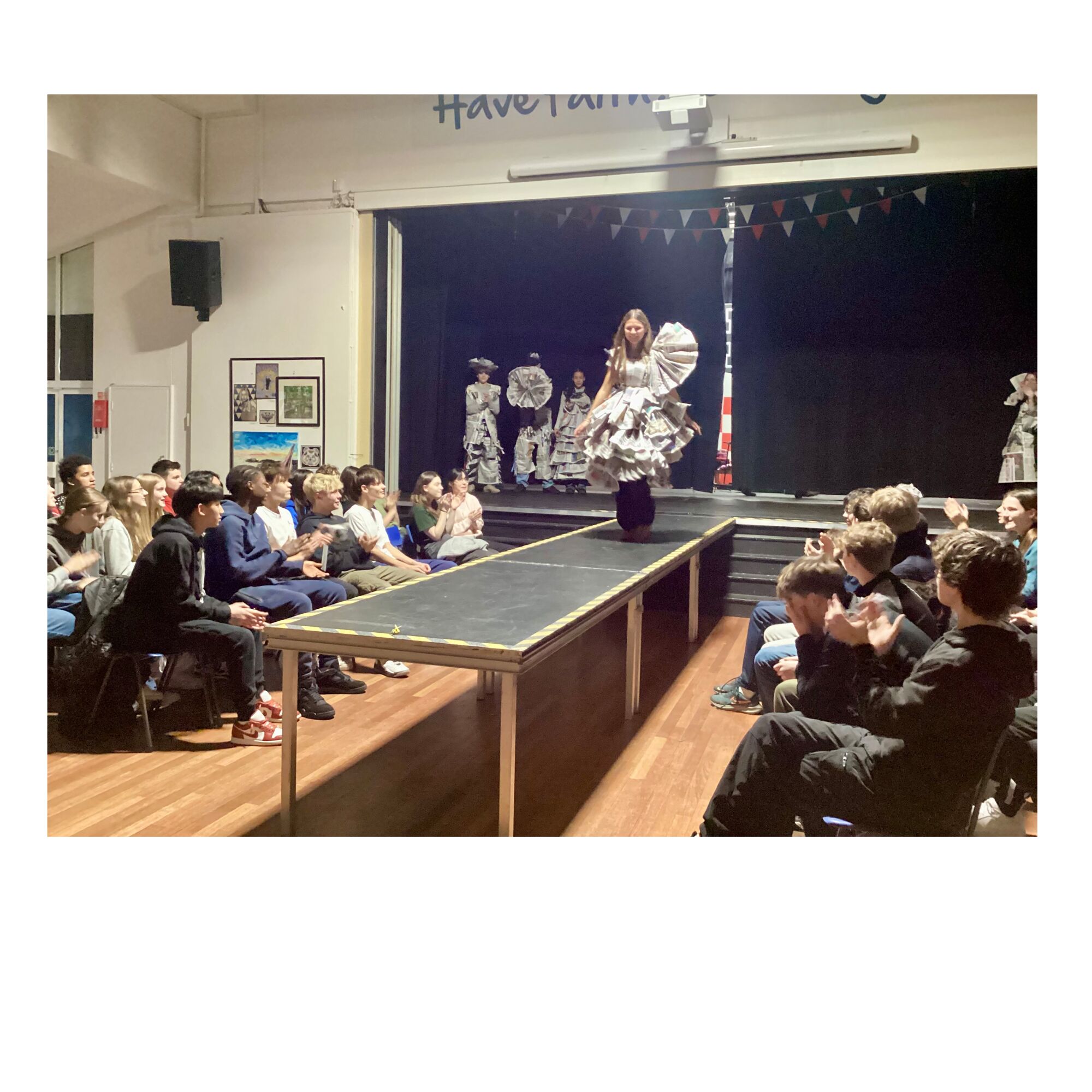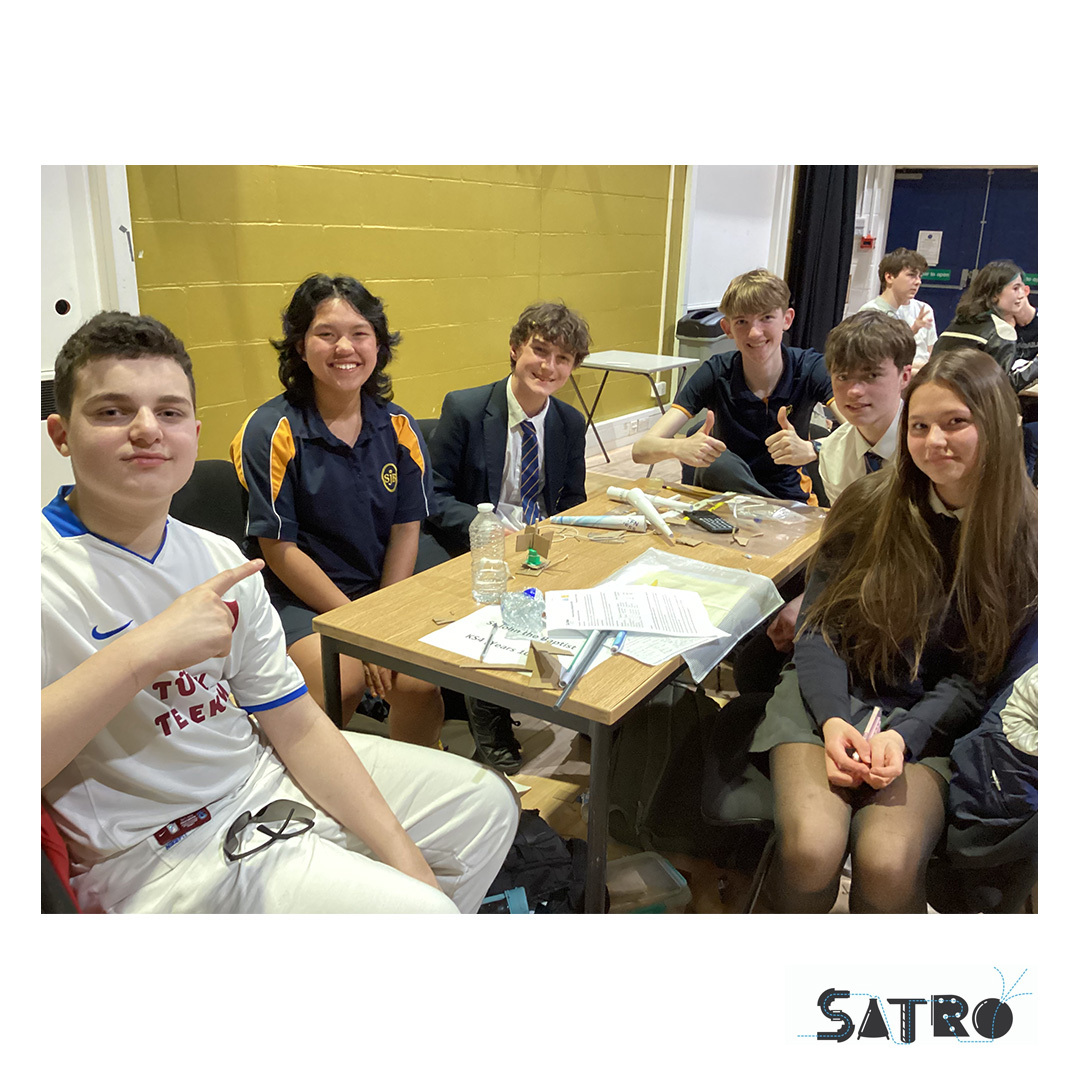- Home
- Our Curriculum
- Subjects
- Design & Technology: Graphics - KS4
Design & Technology: Graphics - KS4
Students at SJB study Design and Technology to become individuals who are equipped with the skills, understanding and responsibility for shaping the world for future generations. Curiosity, creativity, adaptability, independence, and problem solving underpin everything we do.
At SJB students can choose to take Design and Technology: Graphics as one of their GCSE options. Below you can find out more information about the course that our students study.
Exam Board: AQA
Qualification: GCSE Design and Technology 8552
AQA GCSE Design and Technology SpecificationD&T Curriculum Map
Catholic Social Teaching Principles in D&T
GCSE Design and Technology: Graphics prepares students to thrive in a modern, tech-driven world by combining creativity with practical expertise. With a focus on graphics, students develop skills in sketching, technical drawing, digital illustration, and computer-aided design (CAD). They learn to use industry-standard software to create visual concepts, packaging, branding, and promotional materials. Through real-world design contexts, students explore user needs, experiment with ideas, and develop functional prototypes using a range of materials and graphic techniques—including rendering, model making, and print processes. Students learn to manage projects independently, communicate ideas visually, take creative risks, and understand the wider influences on design—including historical, cultural, environmental, and economic factors—while building confidence in their graphic and practical skills.
Our GCSE Design and Technology: Graphics course equips students with the essential knowledge, skills, and understanding to confidently engage in the iterative design process—exploring ideas, creating solutions, and evaluating outcomes. Learning is brought to life through hands-on projects, where theory is applied in practical, meaningful ways to develop creativity, problem-solving, and technical proficiency.
In this course, students predominently work digitally and with paper and board. They learn about branding, colour theory, typography, layout design, workshop machinery, digital design and CAD/CAM, textiles and sewing machine techniques and printing and finishing skills.
The subject content is been split into three sections as follows:
Core technical principles
In order to make effective design choices students will need a breadth of core technical knowledge and understanding that consists of:
- new and emerging technologies
- energy generation and storage
- developments in new materials
- systems approach to designing
- mechanical devices
- materials and their working properties
Specialist technical principles
All students are expected to gain a deep understanding of key specialist technical principles focussing on paper and board.
- selection of materials or components
- forces and stresses
- ecological and social footprint
- sources and origins
- using and working with materials
- stock forms, types and sizes
- scales of production
- specialist techniques and processes
- surface treatments and finishes
Designing and making principles
They will need to demonstrate and apply knowledge and understanding of designing and making principles in relation to the following areas:
- investigation, primary and secondary data
- environmental, social and economic challenge
- the work of others
- design strategies
- communication of design ideas
- prototype development
- selection of materials and components
- tolerances
- material management
- specialist tools and equipment
- specialist techniques and processes
The final assessment for GCSE Design and Technology: Graphics is split into two parts, 50% Non-exam assessment (NEA), 50% Written exam:
NEA 50% of GCSE
- A substatianal design and make task
- 30–35 hours approximately
- 100 marks
Students will select from a choice of contextual challenges which are released annually by AQA on 1 June in the year prior to the submission of the NEA. Students will produce a prototype and a portfolio of evidence. Work will be marked by teachers and moderated by AQA
Written Exam 50% of GCSE
- 2 hour exam
- 100 marks
What's assessed:
- Core technical principles
- Specialist technical principles
- Designing and making principles
- In addition:
- at least 15% of the exam will assess maths
- at least 10% of the exam will assess science
GCSE Design and Technology: Graphics - A Gateway to Creativity and Innovation
GCSE Design and Technology: Graphics isn’t just about making things—it’s about understanding how the world works and how we can shape it. This exciting course helps students develop practical skills, creative thinking, and problem-solving abilities that are useful in everyday life and future careers.
Why Choose Design and Technology: Graphics?
1. Ready for the Future Students learn how technology affects our lives—from history and culture to economics and society. This course helps them become confident participants in a fast-changing, tech-driven world.
2. Hands-On Learning From sketching ideas to building real products, students get stuck into practical projects using a variety of materials and tools. It’s a great way to spark creativity and bring ideas to life.
3. Real-World Problem Solving Design challenges encourage students to think critically and find smart solutions to real problems. These skills are valuable in any career and everyday decision-making.
4. Career Pathways Design and Technology: Graphics opens doors to exciting careers like engineering, architecture, product design, and manufacturing. It’s a strong foundation for students interested in innovation and making a difference.
5. Learning Across Subjects This course blends knowledge from science, maths, and art, helping students see how different subjects connect and apply to the real world.
6. Fair and Supportive Assessment Students are assessed through both practical work and written tasks. Regular feedback helps them grow, improve, and feel confident about their progress.
What’s the Big Picture?
By studying GCSE Design and Technology: Graphics, students build a powerful mix of skills—creativity, technical know-how, and problem-solving—that prepares them for whatever path they choose. Whether they want to design the next big invention or simply understand how things are made, this subject gives them the tools to succeed.
GCSE Design and Techology: Graphics is an excellent stepping stone to further study and careers such as:
- A-Level D&T: Product Design
- Apprenticeships and University degrees in areas like Graphic Design and Communication, Product and Industrial design, Architecture, Game and Motion design, Architecture, Computer science and IT.
- Careers in:
- Graphic design: packaging and publication
- Product/Industrial designer
- Environment: architecture, interior design, landscape design
- Video game designer
- Motion designer
- Illlustrator
- Marketing and advertising
- Media
- Interactive design: web, UX
Enrichment in our department plays a vital role in helping students think creatively and solve real-world problems beyond the classroom. We endeavour to provide opportunities that develop essential skills for future careers and everyday life. Please see our opportunities that we offer at KS4:
- Arkwright Engineering Scholarship – In Year 11, students can apply for the Arkwright Engineering Scholarship—a prestigious national award that identifies and supports high-potential students aged 16–18 who aspire to a career in engineering. It offers mentoring, funding, and exclusive STEM experiences over a two-year programme to help scholars develop into future industry leaders. Scholars at SJB have been awarded prestigious, externally funded scholarships, generously sponsored by organisations such as the RAF and tlmNexus—offering our students unique opportunities to develop their talents and gain industry recognition.
- SATRO Problem Solving Challenge – Each year, we host and compete in this exciting engineering challenge, with KS3, KS4, and KS5 teams going head-to-head against schools from across the South East. Students work collaboratively to solve real-world engineering problems, gaining valuable hands-on experience while strengthening their teamwork, problem-solving, and creative thinking skills. The event also offers students the chance to connect with professionals from the engineering industry, broadening their horizons and inspiring future careers.
- Industry Day – All Year 10 Design and Technology students take part in a fast-paced Industry Experience Day, where they design, make, and present ideas in a team setting. The event builds creative confidence, teamwork, and presentation skills while offering insight into careers in design, event production, and the wider creative industries.

